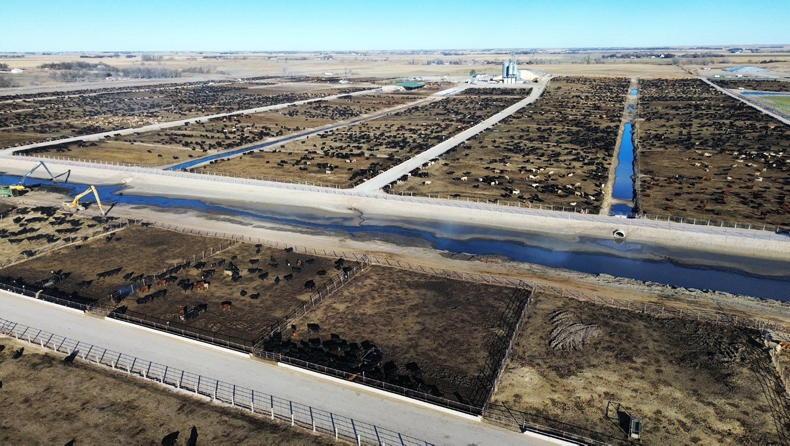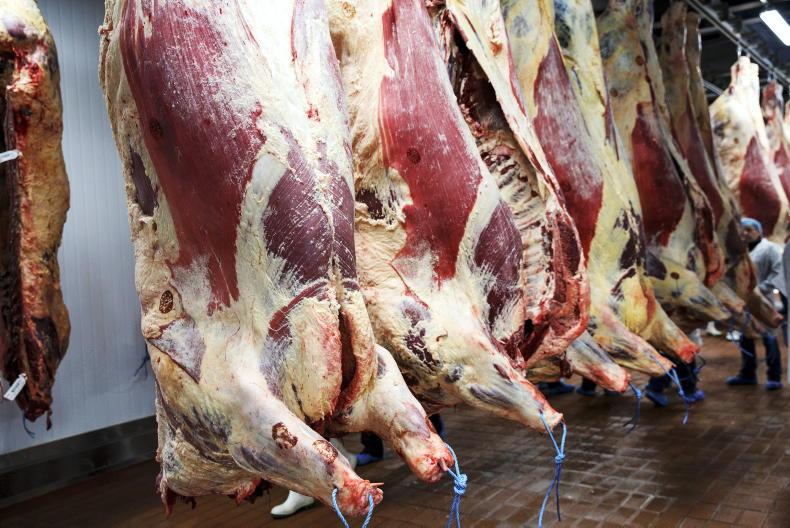Irish beef producers can only look on with envy at the prices being paid for cattle elsewhere in the world compared with what they are getting.
There are some spectacular examples such as Poland, where, historically, farmgate prices lagged Irish process by up to a euro per kilo, in much the same way as Irish prices lagged British prices.
The conventional explanation for this was that Ireland was behind the UK because we are a major exporter of beef, while they are a net importer and domestic beef therefore commands a significant premium.
Poland is the second-largest beef exporter in the EU after Ireland, but its beef product is primarily a by-product of the dairy industry and was considered a cheap alternative to Irish across EU markets.
Logic
The logic with Poland appeared to change around this time last year. In July 2021, Irish R3 steer prices were 68c/kg ahead of Polish R3 young bulls.
However, by the last week of October, that gap had disappeared and Polish prices had in fact jumped 7c/kg ahead of Irish.
Since then, Irish prices have only got back in front of Polish on a few occasions and on 5 November this year, Polish R3 young bulls were trading at €4.94/kg while Irish R3 steer prices lagged behind on €4.54/kg.
So much for Irish farmers producing a premium grass-fed steer beef product when it is outperformed to this extent by a country where beef production is a by-product of its dairy industry.
Not just in Europe
It isn’t just in Europe that Irish farmgate prices are lagging behind.
Australian prices have long been well ahead of Irish, the conventional explanation being that herd rebuilding following drought had left cattle for slaughter scarce.
Prices in Argentina have regularly been better than Irish, while perhaps the most interesting example of all is the performance of the industry in the US.
Not only do US farmers benefit from being able to use hormones to boost production, they receive a handsome premium compared with their Irish counterparts.
Even with the euro recovering some of its value against the US dollar this week, the reported United States Department of Agriculture (USDA) farmgate price is the equivalent of €5.21/kg. This is for a carcase with a kill-out in excess of 60%.
The US is the second-largest beef exporter in the world after Brazil, exporting 1.1m tonnes in the first nine months of 2022, three times the level of Irish beef exports.
The EU and UK are a tiny part of this market, as they exclude hormone-fed beef, so their target markets are very much centred on Asia, with the Chinese market in particular showing exceptional growth.
Structure and profitability of US processing industry.
The US beef processing industry has come under fire from the Biden administration because four companies, JBS, Tyson, Cargill, and Marfrig (National Beef) process over 80% of the cattle between them.
Unlike in Ireland, there is a good level of insight into the financial performance of US beef processing factories and they are clearly very profitable.
Tyson Foods last week released its performance data for the last quarter of its financial year ending on 1 October.
It showed a drop in its operating income for the final quarter of the 2022 financial year to $766m (€736m) or 5.6% compared with a massive $1.9bn (€1.82bn) or 14.9% in the final quarter of 2021.
The final quarter results of 2021 were exceptional and a record, so the 2022 performance is a return to a more normal level. Overall performance for the 2022 year ending 1 October was a $4.41bn (€4.24bn) operating margin compared with $4.396bn (€4.226bn) the previous year.
The operating margin in the beef business fell from $3.2bn (€3.1bn) or 18% to $2.5bn (€2.4bn) or 12.6%, which is still a spectacular performance.
Interestingly, their explanation for the drop in beef margin was energy and labour cost increases combined with higher cattle prices.
It is universally accepted that Irish farmers produce a premium grass-based beef product supported by world class traceability and quality assurance.
Yet while it has made inroads to the market compared with 20 years ago, the evidence from late 2022 suggests that we aren’t keeping pace with others in Europe and around the world.
The scale of processing in the US and other international countries will give them efficiencies when it comes to economies of scale and contributes to their enormous profits.
However, cheap cattle is the quickest and easiest way for processors to increase margin, but while that may work at present, the reality is that Irish beef farmers cannot absorb the increased production costs of this year and next and expect to remain in business.










SHARING OPTIONS